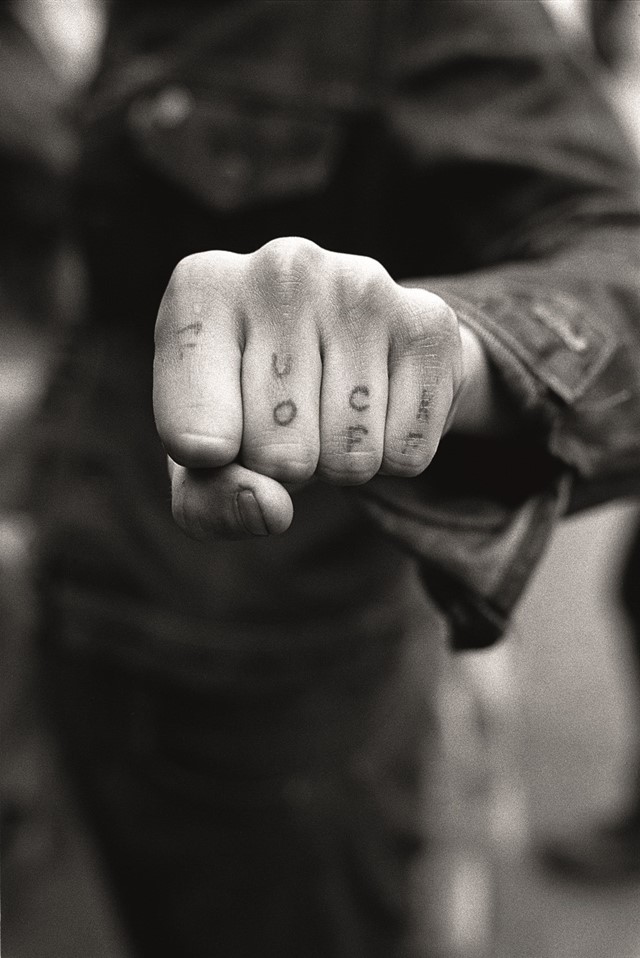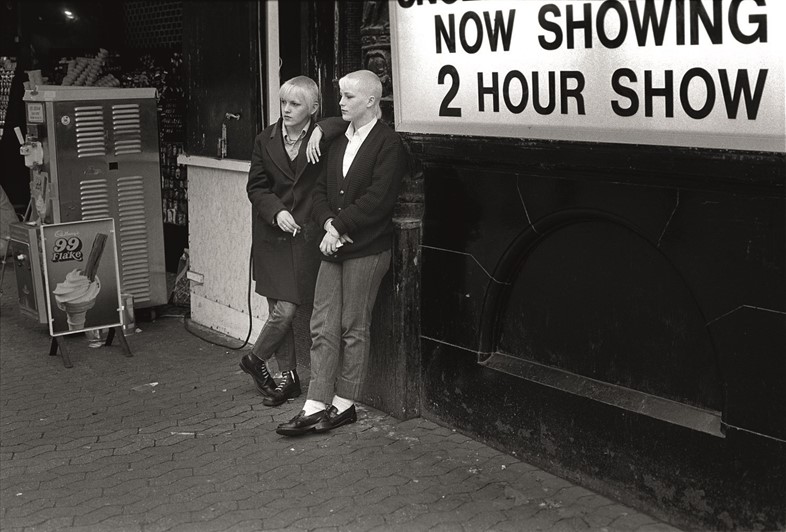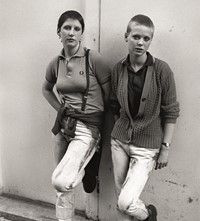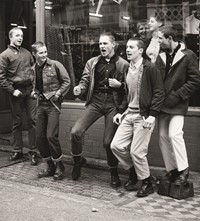Were the original skinheads violent? A new book attempts to set the record straight – here, its author gives an essential guide to the controversial subculture
- TextMiss Rosen
Skinhead culture emerged on the streets of London in 1969, as Mod scene was dying out and a new wave of bourgeois bohemians revelled in the “turn on, tune in, drop out” rhetoric of Timothy Leary. The self-indulgent pretensions of the hippie scene were an affront to Britain’s working-class youth; they created the figure of the skinhead, a back-to-basics rebel who was largely misunderstood.
The original skinheads were the first generation to be moved from historic East End slums and into then-new 1960s brutalist estates. Angry to be cut off from the old networks of support, skins sought to honour this devastating loss by creating their own utopian mythology of a shared working-class past.
Embracing their feeling of marginalisation from the mainstream, skins adopted a uniform that begins with a shaved head and ends in Doc Marten boots, with a nod to the style and sound of the Windrush Generation. Quintessential rebels in search of a good time, skins decamped en masse to pubs, football games, and gigs featuring ska, rocksteady, reggae, and dub DJs and bands.
Skins overtly rejected the historic codes of working-class deference, modesty, and rigid morality and, in the process, became a perfect target for both police harassment and fascist tactics during the 1970s and 80s, forever tainting the image of skinhead culture with the spectre of hooligans and neo-Nazis.
In the new book Skins: A Way of Life (out today via Carpet Bombing Culture), author Patrick Potter sets the record straight with a phenomenal history skinhead culture in the UK. Here, Potter gives a guide to the truth about this subculture.
It Drew Inspiration from West Indian Culture
“You are a working-class teenager in London in the late 1960s. Hippie culture is entering its psychedelic phase and you don’t want anything to do with that. Something else is going on – there are these sharp dressing West Indians putting on parties and nights playing a new sound. It is totally underground.
“Trojan Records was not the only game in town but it has come to represent all of that early ska culture. I can’t say enough about the debt that British youth culture owes to the West Indian influence. The bands saw the skinhead audience and responded to them with songs like ‘Skinhead Moonstomp’ and for a while, according to people who were there, it was a beautiful cross-cultural moment.”
Style Was an Integral Part of the Scene
“I think of the original skinhead as the Mod’s little brother or sister. They get into the scene before they’ve even left school so they don’t have any money at all. Later when you’ve left school and you have a bit of money, you are still very much influenced by your Mod big brother. You want the right labels. But you want to give the look a harder edge, strip out the continental touches and the androgyny. You want a little more Reggie Kray and a bit less Dolce Vita.
“You own a suit for the weekend. You might wear brogues or tasselled loafers too, not just boots everyday. Jeans and boots for the terraces, or the weekday. Cockney classic outerwear, if you can afford it, would include a Crombie or a sheepskin.”

But that Skinhead Style Attracted the Wrong Element
“Subcultures in their early stages are pretty fluid stylistically, then later they get turned into uniforms. In the 1970s, you get a whole different, post-punk skinhead look. Bleached jeans, three-hundred-hole Doc Martens, Ben Sherman, and braces. Ma-1 flight jackets still look good. Unfortunately, this is the look that will make everybody ask you if you are a racist.
“In the 1970s, Britain was going through a phase of right wing populism and alienated working-class youth were seen as the perfect revolutionary army waiting to be signed up. The National Front had a youth recruitment wing and began targeting gigs. In a bizarre twist they also targeted the Two-Tone ska revival. Even The Specials had to stop gigs because the whole front row was doing Nazi salutes.”
The Radical Right Destroyed Everything Skinhead Culture Originally Stood For
“In 1981 an Oi! Punk gig in Southall ended in a race riot with the pub being burnt down. Internationally, racist movements adopted the 1980s military skinhead look, cementing the idea of the Nazi bonehead around the world. It is convenient to hang all of that around the neck of the skinhead, but the majority of skins never joined the NF and the majority of NF voters were not skinheads.
“This is the thorny issue at the heart of it all. Were [the original] skinheads violent? I’ve seen a handful of photographs of skinheads stomping people. There was a type of violence in working-class culture that was sporadic, almost ritualised, and self-limiting. They fought, mainly each other, mainly about territory and usually not to excess. This was part of life for 1960s working men.”

A Timely Re-Evaluation of their Legacy
“It’s nearly 50 years since 1969, which was the halcyon year of the original skins. There is a sense that it is a good time to try and recover what was really going on behind all the moral panic.
“I think that all subcultures are essentially utopian. People try to imagine, through a collective kind of street theatre, a world they want to live in. There are two ways of looking at utopia: you either put it in the future or you put it in the past. The skins were honouring a golden age of working-class culture, a semi-fictional version of their recent past. They were both celebrating and escaping from it – it’s a double-edged sword. They idolised their Cockney docker grandfather but they also wanted a better life than him.”
Skins: A Way of Life is out today via Carpet Bombing Culture















